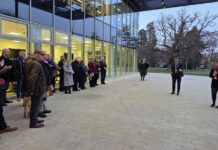
By Guy Marsden, director of Highbridge Properties, who are developing the Magenta Business Park together with Clyde Gateway
SCOTLAND is rapidly approaching its net zero deadline of 2045. When these sorts of targets are set by the government they can seem so far away in the future. To organisations and businesses who are just trying to survive, they can seem irrelevant to the here and now. But in terms of investment, infrastructure, and property, 2045 is just around the corner and must be at the forefront of organisational thinking.
The huge rise in energy prices in the last year has forced businesses to bring forward investment into net zero technologies. They realise that protecting the environment is not just a benefit to the planet, their teams and their customers, but is also a key part of resilience against economic and societal forces beyond their control. This will only grow if extreme weather and scarcity of resources continues, as climate scientists predict.
That’s why companies are closely examining their carbon footprints. For many, one of their biggest sources of emissions will be from their offices and warehouses. Globally, 40% of carbon emissions come from the built environment. But this is changing.
At Clyde Gateway, Scotland’s first Green Regeneration Innovation District, offices are becoming more sustainable with the installation of a 5th generation district heating and cooling system. This cutting-edge technology allows the separate heating and cooling of each building by virtue of the configuration of the heat pumps. The ground-breaking project is one of Scotland’s most innovative and sustainable district heating systems. It will utilise wastewater as an energy source and the heat pump technology will be supported by photovoltaic panels to provide electricity.
This multi-million pound investment by the public sector will deliver both heating and cooling to existing and future offices at Magenta Business Park, Glasgow.
This technology will provide occupiers at Magenta with unrivalled environmental credentials, cost savings, and staff with a workplace where they are proud to spend their time.
Magenta is also featured in the Scottish Government’s Green Infrastructure Portfolio and is uniquely positioned to work with investors and developers to achieve sustainable change, building on the project’s existing environmental and societal impacts.
But this is just a part of so much more. With a train station just minutes away by foot and acres of green space and nature in the vicinity, this project is establishing an exemplar for the live, work and play format helping to set the blueprint for the future of sustainable workplaces. With cleaner and greener workplaces and transport connectivity workers will have the best of all worlds.
According to the Climate Change Committee, Scotland has the most ambitious targets to decarbonise buildings in the United Kingdom. Yet they also highlight that there are not adequate policies in place to deliver this.
But in the east end of Glasgow, businesses and organisations can future proof their investments by becoming part of our sustainable future now. The Green Regeneration Innovation District allows organisations to lead from the front and grasp the opportunities that it provides, allowing employees to work in desirable surroundings and lead an active, green lifestyle.
It means that organisations can get ahead of the curve and the competition, and deliver a net zero future for their employees, their customers, and above all else, the planet.








